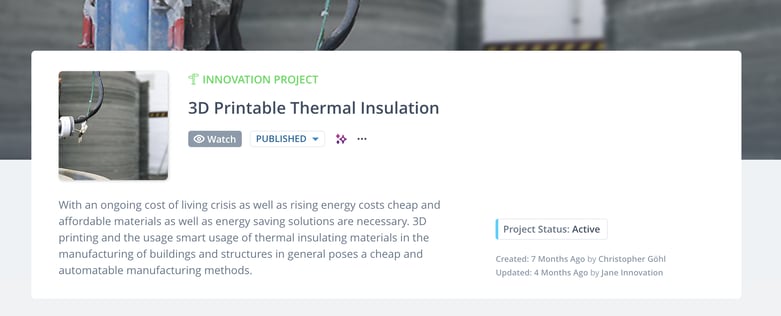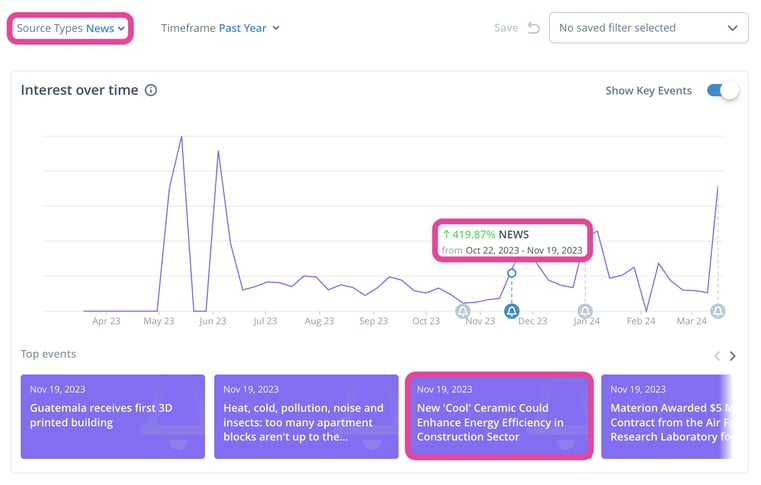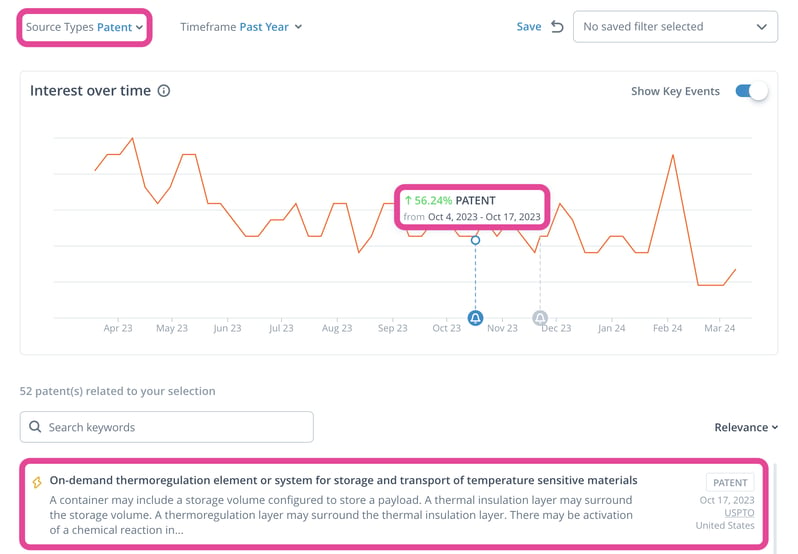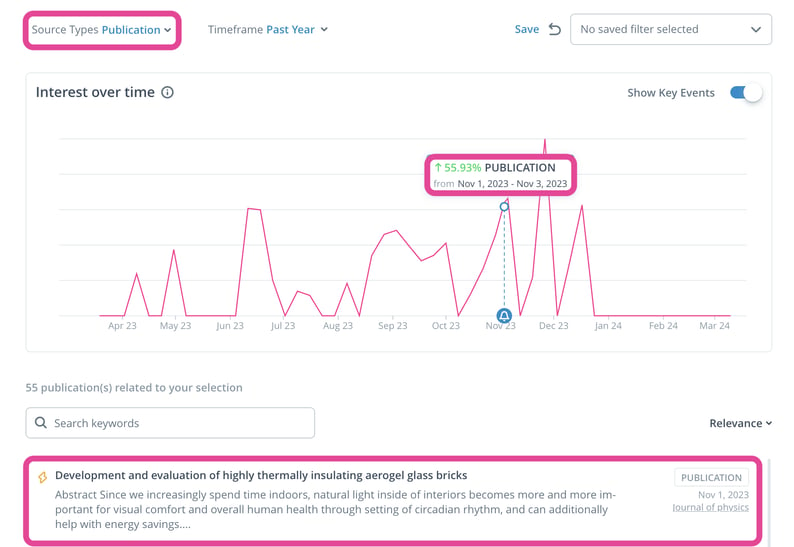Identifying opportunities and risks is crucial at the beginning of the innovation lifecycle, shaping strategy and guiding where to invest resources and how to navigate the development of solutions. However, this process is not confined to the initial stages but is integral throughout the entire innovation lifecycle. It serves as a mechanism for continual validation, ensuring that ideas and projects in your pipeline remain relevant and aligned with market needs and potential hazards.
Having a sort of early warning system, alerting you to changes in the external environment that could impact your innovation pipeline, allows you to refine and enhance existing projects, ensuring they are well-positioned to capitalize on new opportunities and mitigate risks.
In this blog, we'll outline the core components of an early warning system, capable of spotting opportunities and risks before they derail your innovation plans. Find out how this looks in practice with an example from the construction industry and how the ITONICS Innovation OS can be leveraged to detect and interpret early signals, allowing you to proactively adjust your strategies and operations to stay ahead of the competition.
Core components of an innovation early warning system
The core components of an effective early warning system for innovation encompass several key elements, each playing a crucial role in identifying and responding to potential opportunities and risks. These components form a comprehensive framework that allows businesses to anticipate changes and adapt their innovation strategies accordingly.
Data collection: The foundation of any early warning system is robust data collection. This involves gathering a wide array of information from various sources, such as news, patent databases, and scientific publications. Tools like ITONICS Insights facilitate this process by aggregating and filtering relevant data, ensuring a comprehensive view of the innovation landscape.
Signal detection: An effective early warning system must be capable of detecting weak signals that may indicate emerging opportunities or risks. Automated Monitoring from ITONICS does this by distinguishing between routine fluctuations and significant changes that could influence the innovation pipeline. Automatic alerts ensure stakeholders are notified of any significant or sustained spikes or declines in interest around a defined topic area.
Data analysis: Once data is collected, the next step is to analyze and interpret it to identify meaningful patterns, trends, and signals. Data visualization and analysis tools, such as ITONICS Radar and Matrix, contextualize data, enabling users to discern actionable insights from mere noise. These tools assist in evaluating the potential impact and relevance of emerging trends or risks.
Scenario planning: Utilizing the insights gained from data analysis and signal detection, organizations can engage in scenario planning. In multi-layer roadmaps, innovation managers can view their innovation pipeline alongside these future scenarios, see where potential risks and opportunities will impact individual projects, and what other drivers of change will influence outcomes.
Response mechanisms: Identifying risks and opportunities is only half the battle; an early warning system must also facilitate swift and effective response. ITONICS portfolio management tools empower innovation, R&D, and technology teams to translate insights into actionable strategies, enabling them to capitalize on opportunities or mitigate risks swiftly.
An exemplary early warning system from the manufacturing industry
Imagine you have an innovation project, still in the planning phase, around 3D printable thermal insulation materials for use in manufacturing buildings, vehicles, and electronics. To proactively spot opportunities and risks that could impact this project as you progress from planning to development, you would likely monitor signals related to technology, regulations, trends, competitors, and supply chain dynamics.

For example, looking at the interest over time for this project, 3D Printable Thermal Insulation, you can easily see the key events that point to sustained or sudden spikes or declines in interest.

Here, you can see a nearly 420% increase in interest from news sources, along with some of the strong signals that contribute to this spike. These strong signals, represented as purple tiles below the timeline, are automatically generated clusters of similar news articles.
If you were looking for technological advances that could impact this project, the strong signal New 'Cool' Ceramic Could Enhance Energy Efficiency in Construction Sector may be relevant. And you can investigate the strong signal further by delving into its auto-generated description and related news articles.
In considering how this strong signal may influence your project, you may uncover potential opportunities and risks, such as:
|
Opportunity Leveraging the new 'cool' ceramic within the 3D printable thermal insulation project could revolutionize the construction sector by providing an unprecedented level of energy efficiency, setting a new benchmark for eco-friendly building materials. |
Risk The adoption of this ceramic technology by the market might set new regulatory standards, requiring rapid adaptation. If the project fails to integrate the ceramic efficiently, there's a risk of falling behind in compliance and market relevance. |
You can also view the change in interest over time for patents and scientific publications related to your project by adjusting the source type above the timeline. Monitoring these sources provides a comprehensive understanding of the technological landscape and intellectual property dynamics, crucial for staying ahead in innovation.

For instance, an uptick in patent filings related to thermoregulation materials or 3D printing technologies can signal a growing interest and investment in these areas, suggesting a potential shift in industry standards or emerging best practices. Conversely, a decline might indicate waning interest or the maturation of a particular technology, guiding strategic decisions about where to allocate resources.
The patent for On-demand thermoregulation element or system for storage and transport of temperature sensitive materials aligns closely with the objectives of the 3D Printable Thermal Insulation project.
|
Opportunity Incorporating the patent's thermoregulation system into the 3D printable insulation material could broaden its market applications, especially in logistics, enhancing its adaptability and value in temperature-sensitive transport. |
Risk The unique chemical reaction mechanism in the thermoregulation layer may introduce unforeseen material behavior under certain conditions, potentially requiring extensive testing and adaptation of the 3D printing process to ensure stability and safety of the end product. |
Moreover, tracking scientific publications offers insights into cutting-edge research and potential collaboration opportunities. It can also highlight emerging concerns or challenges within the field that might necessitate adjustments in your project's direction or focus.

For example, the scientific publication titled Development and evaluation of highly thermally insulating aerogel glass bricks could provide valuable insights into the development of advanced insulating materials.
|
Opportunity Leveraging the innovative aerogel glass brick technology from the publication could enable the project to develop materials that not only offer exceptional thermal insulation but also enhance natural light penetration in buildings. This could result in a groundbreaking product that combines energy efficiency with architectural aesthetics, setting a new standard in the construction industry. |
Risk If the project fails to integrate the aerogel glass brick's unique properties effectively, there's a risk of missing out on a significant market advantage. Additionally, there may be technical challenges in adapting 3D printing processes to accommodate the specific characteristics of aerogel glass, which could delay development and increase costs. |
Alerting you to changes in interest across news, patents, and publications, your early warning system empowers you to quickly spot emerging opportunities and risks that could affect your innovation pipeline. Equipped with this forewarning, you can adapt swiftly to the evolving innovation landscape, ensuring your projects and initiatives remain relevant, competitive, and aligned with the latest industry advancements.
ITONICS: your always-on early warning system
By integrating ITONICS into your innovation ecosystem, you not only safeguard your projects from potential pitfalls but also empower your team to seize emergent opportunities with confidence. This system doesn't just alert you to changes; it provides a comprehensive toolkit for understanding, planning, and responding effectively, making it an indispensable ally in your quest for innovation excellence. With the ITONICS Innovation OS, you transform uncertainty into a strategic advantage, ensuring your innovation pipeline is not just reactive but proactively aligned with the future.










